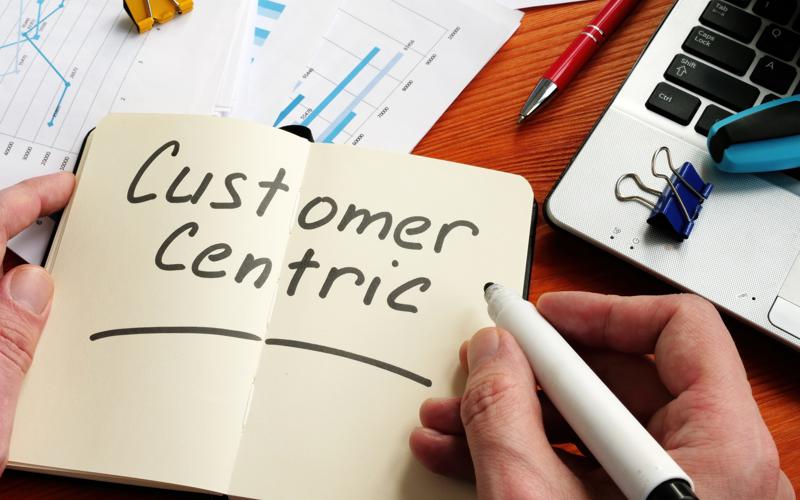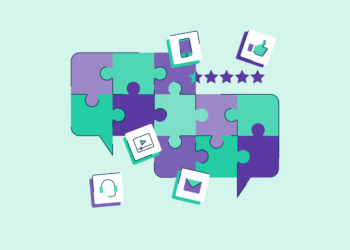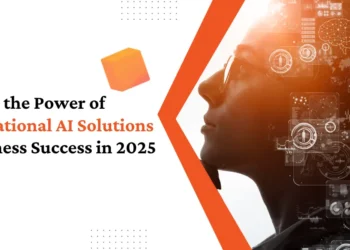
Is It Right For Your Business?
As a marketer, I’m fixated on customers. I’m getting inside their heads, understanding their pain, their goals, and their purchase path. I’m thinking about their experience and their journey through a business. It’s customer, customer, customer.
When I’m consulting with clients, speaking to customers is one of their biggest challenges. They ask, why do we need to think like a customer when we just want to focus on our business or some form of we need to tell our story.
They want to focus on themselves, or they want to tell everyone:
- This is who we are
- This is our mission
- This is what we offer
- Here’s how we operate, etc.
As business owners, we all need to engage people to facilitate purchases. However, I feel like I’m pulling teeth to get people to engage in customer-centric communication.
Aren’t Branding and Positioning Important Too?
Of course, they are. They’re the foundation of your marketing. But acknowledging this confuses people more. How can we be brand and customer-centric at the same time? They sound like contradictory ideas, but they’re not.
Let’s Define A Few Terms
What is Your Brand?
Your brand is the experience you’ve created for your clients over time. Think about it as your reputation; what people expect from you, based on past experiences.
Your brand is built upon your values. Your values direct your behaviours. Your behaviours create client experiences. Experiences get built from promotions, online presence, in-person interactions and product use.
What is Your Positioning?
Your positioning is the mental category you want people to define you with. It’s what you are, and the opportunity you represent for clients.
Your positioning happens now. It’s a 30-second phenomenon. People want to categorize you quickly into a mental pigeonhole. Your positioning enables people to file you correctly.
Customer-Centricity is More Complicated
There is a customer-centric continuum that starts with your communication, escalates to behaviours and ways of being, and progresses to your business model.
Customer-Centric Communication
In this style of communication, you focus on connecting with the reader. You want to be relevant and compelling by connecting at an emotional level. You want prospects to see that you understand their needs. You want them to see you as an opportunity to get what they want.
Ideally, you’re highlighting a win/win scenario that just makes sense. You’re making it easy for people to solve a problem or reach a goal. This, in turn, helps you reach your business goals.
Customer-Centric Solution Selling
In consultative or solution selling, there is no pitch. The fundamental goal is to establish a trusted advisor relationship with your client. You understand the long-term relationship is far more valuable than any single sale.
You must ask questions and get to know your client’s situation. You witness the symptoms they’re dealing with. You help them see the root problems. Then you help them connect with their escalating pain. You help them see the value in addressing their challenge. You’re not pitching; you’re helping them solve problems they are too close to see.
Presumably, your company can help them solve their problems. Then it’s the start of a mutually beneficial relationship.
A Customer-Centric Business Model
The pinnacle of customer-centricity is when you design your company to be a perfect partner.
Rather than focusing on transactions, you focus on meeting more and more of your client’s needs over time. Your clients stay with you because they would need several companies to get what you supply as a single source. As you continue to do business together, you learn more and more about your client’s needs. This insight allows you to adapt further to support more of their requirements. With you as their partner, why would your client go anywhere else?
Can you see the inherent synergy in the approach? It is not transactional; it’s about alignment and long-term relationships.
Being Customer-Centric Does Not Conflict with Branding
There is nothing inherently conflicting about brand, positioning and customer-centricity. The goal is to balance all three.
Don’t Force the Fit
Customer-Centricity is not for everyone. Let’s dig a little deeper to see if it’s for you.
Is Your Business Transactional or Relationship-based?
Where is your business on this spectrum? You can choose a side or try to straddle both worlds. However, if you talk one way and behave another, you run the risk of damaging your reputation.
If your customer-centric communication sets an expectation that your transactional operation can’t deliver, then you’re breaking your brand promise.
Transactional Businesses
In a transactional business, it is all about making a sale. These types of businesses care about increasing lifetime value. However, they do so by working to increase share-of-wallet (encouraging you to buy more from them, versus competitors). They often use loyalty programs to reward target behaviours with points. Loyalty programs are a bit like operant conditioning, they have little to do with relationship building.
Relationship-based Businesses
Relationship-based businesses by nature, have fewer clients, and fewer transactions, but individual transactions tend to be larger. The core business model is about cultivating relationships and maximizing lifetime value. It’s about solving more of your client’s problems, not just recurring transactions. Relationship-based businesses can be confusing because customer centricity runs contrary to the last 200 years of industrialism and product-centric advertising.
Adopting Customer-Centricity
If you decide customer-centricity makes sense, and you choose to adopt it, you’ll have some work to do.
You’ll Need to:
- Define target clients and develop personas
- Develop empathy maps
- Map purchase use cases
- Map your customer’s journey
- Create a value ladder
1. Define Target Clients
Customer-centricity starts by specifying a target client. Then you develop an intimate understanding of them, their business, and the challenges they face. It’s about walking a mile in their shoes. It’s about understanding their struggle and how you’re going to help them. You need to develop client empathy and real solutions.
2. Develop Empathy Maps
Yes, empathy mapping is a thing. It’s a powerful tool to help you understand your client’s emotional world. It helps you speak directly to them. Marketing that speaks to people at an emotional level resonates. It’s engaging, relevant and purposeful.
I’m a fan of Neil Rackham’s SPIN Selling model for empathy mapping. It is highly pragmatic. However, there are many different techniques available.
Once you understand your client’s needs, you can map their purchase use case.
3. Map Purchase Use Cases
Mapping your customer’s purchase use case is about designing how people buy from you. You work to map out their needs, questions, and concerns. Then you give people the information they need to mitigate their risk of buying from you.
Give People Want They Need To Say Yes
- Offer Details
- Price and Shipping Details
- Client Reviews
- Expert Reviews
- Technical Specifications
- Warranty Information
- Answers to Frequently Asked Questions
- Samples and Free Trials
4. Map Your Customer’s Journey
Working towards customer-centricity requires you to map your customer’s journey through your business. In this case, you are thinking beyond the first sale to the long-term. In some cases, you’re looking at designing a multi-year relationship.
How will this relationship play out? Why will a client stay with you? Can you anticipate their needs over time? Do you have a program or a curriculum you wish to lead them through? What are the steps they need to follow?
5. Create Your Value Ladder
Your value ladder is the sequence of offers you layout for clients. Your value ladder extends from your first interaction to the end of the relationship.
The purpose of a real ladder is to place rungs close enough together to ease an assent. The same is true with your value ladder. Each new offering leads naturally from the last, in low-risk steps. Each consecutive offer contributes value, earns you trust and reduces risk.
A value ladder generally starts with a series of free warm-up offers. Then you escalate to a paid first offering. Once there is an economic relationship, you start working collaboratively to build a working relationship. Together you solve problems while you maximize customer lifetime value.
Depending on your goals, you might string together a dozen or more offerings in your value ladder.
This brings us full circle to the question of whether customer-centricity is for you? And to what degree will you take it on? Will your approach be tentative or Full-Monty?
Making the Customer-Centric Decision
There is nothing wrong with a transactional business model. The question is whether you’ll be more effective by adopting a more customer-centric approach? To help you decide, answer these five questions.
1. Is being customer-centric authentic?
If not, don’t pretend it is. You’ll do more damage than good.
2. Do the economics make sense?
Can you operate a customer-centric business, given your production economics? Not everyone can. And that is not wrong.
3. Can you straddle the divide?
Can you adapt your communication and sales practices, without re-organizing your core business? Will you be able to keep your brand promises?
4. What’s the norm in your industry?
Which way are your competitors going? What do clients expect from you?
5. What’s the opportunity cost when you contrast the two models?
Have you explored your options fully?
I hope this article gets you thinking about where you fit on the customer-centricity continuum. It’s an important topic that’s central to how you approach marketing.






![Why Reddit’s Refusal to Track You Is Marketing Gold [+ Video]](https://mgrowtech.com/wp-content/uploads/2025/07/G2CM_FI1176_Learn_Article_Industry_Insights_Rob_Gaige_V1b-350x250.png)










